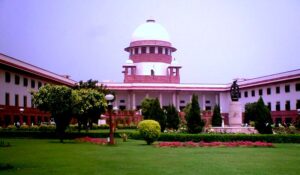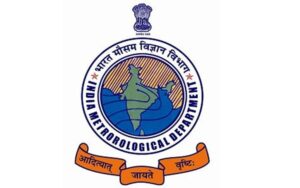Less Saffron, More Green – Environment Challenges before the Modi Government
Dewangi Sharma
Pune, October 2, 2019: In the latest NITI Aayog report it was declared that by 2021 as many as 21 Indian cities will run out of water. Regions in and around Chennai, villages in Vidarbha region of Maharashtra are already engulfed in the deadly water crisis. India captures the stage with the top 11 most polluted cities in the world. According to the Indian State of Forest Report 2017, the Greenlands only share 21% of the total land cover, a rather disappointing state. I don’t think I need to share more disappointing and dreadful statistics before you realise that- the environmental crisis is REAL and presents insurmountable challenges before the Prime Minister Narendra Modi-led government.
The 2019 Lok Sabha elections focused on many ‘saffron’ issues like nationalism, national security, but the compromised ‘green’ political issues like the environment, forests and climate change hardly found any coverage. But to deliver Modiji’s promise of ‘Sabka Saath, Sabka Vikas’ he needs to adopt a more fierce, strong and serious approach towards the environment.
Sky Blue, Earth Green
One of the biggest challenges before the government is to restore and preserve our “blue sky and green earth”, in the words of our environment minister Prakash Javadekar.
Air pollution continues to haunt people all around the globe and the situation is very disturbing in India. The quality of the air we breathe is deteriorating, air pollution impacting public health and living standards. The government has launched a city-specific National Clean Air Programme in a bid to make the air in our cities breathable and repainting our skies blue. But noble intentions in itself achieve nothing, the government will need to do a lot more than shouting trendiest slogans and announcing the fanciest schemes. Tackling mammoth-scale pollution needs stringent pollution control tactics and corporate co-operation.
Preserving our “earth green” is ostensibly the most controversial issue faced by this government. Many environmentalists have opposed the government’s pro-business approach towards monitoring the forests. They have gone on to call the new amendments in the Indian Forest Act as draconian and a threat to the forests of our country. Modi’s environment policies are considered a boon to the businesses but bane for the forests. The reformed laws have eased and relaxed the process of ‘Green clearance’, it has made it easier for corporations to exploit natural resources. Tribals are apprehensive that their land will be alienated and their rights absolved. The passionate Sagarmala project will open India’s coastline to huge infrastructural projects, a classic example of the government’s current policy of prioritizing industrial growth over preserving biodiversity and maintaining ecological balance.
In its bid to promote the development and help its business partners, the government has been ignorant of environment needs. The last remaining green areas in cities are being destroyed even after strong protests- Aravali in Gurgaon and Aarey in Mumbai are already facing the wrath of the government’s economic dreams. The government has also failed in controlling the illegal felling of trees. Promoting afforestation and making cities pollution free is a huge challenge for the government.
In such a case, NaMo doesn’t quite seem to be the ‘champion of the earth’. But not all government policies deserve our criticism. The government has taken a very proactive stand on cleanliness and ODF-India via the Swachh Bharat Abhiyan. It has started discussions and created awareness. Also, the use of alternative renewable sources of energy is being encouraged through subsidies and government expenditure. It has acted by decreasing stubble farming, improving fuel quality and promoting Electric vehicles as an alternative to carbon-burning cars.
Red Alert
The threat of climate change looms large in India. Temperatures are rising, rivers are depleting so are underground water levels and our response to this catastrophe seems paralysed and lethargic.
The Jal Shakti Mantralaya has promised to manage water resources and provide clean drinking water to all households by 2024. Achieving this feat will be another challenge. Just a third of India’s wastewater is currently treated before being dumped into freshwater bodies. Water is already a scarce and sacred entity. The government’s attempt at saving Indian rivers has been Great cry, little wool. Water pollution is urgent and visible and needs more action than just beautification efforts, toilet building, installation of garbage cans, like band-aids on scrape wounds.
Politics needs to prioritise the green, to save the green. Pollution has caused a public health emergency. On a more positive note, this government has accepted the problem exists but needs to effectively tackle it. More encouragement and support is needed in the renewable energy sector. A proactive role has to be taken to minimise the impact of corporates and developmental projects on the environment. Governments can no longer afford to treat the environment as a peripheral issue, and accepting this philosophy will be the biggest challenge for the Modi-government. The government needs to change its policies to deliver on its agenda for change.
(Dewangi Sharma is a law student. The views expressed here are hers and not the Punekarnews.in)








